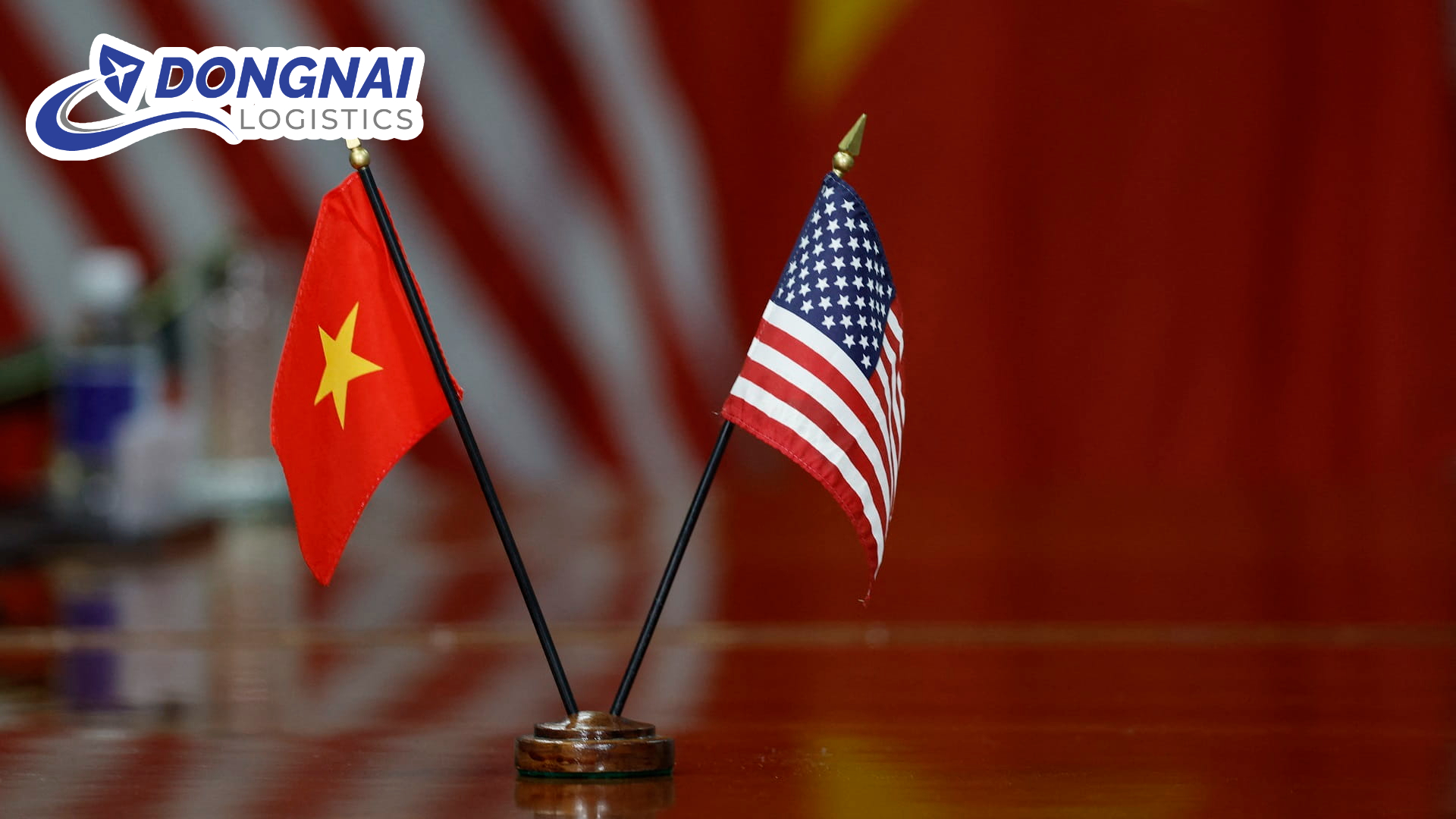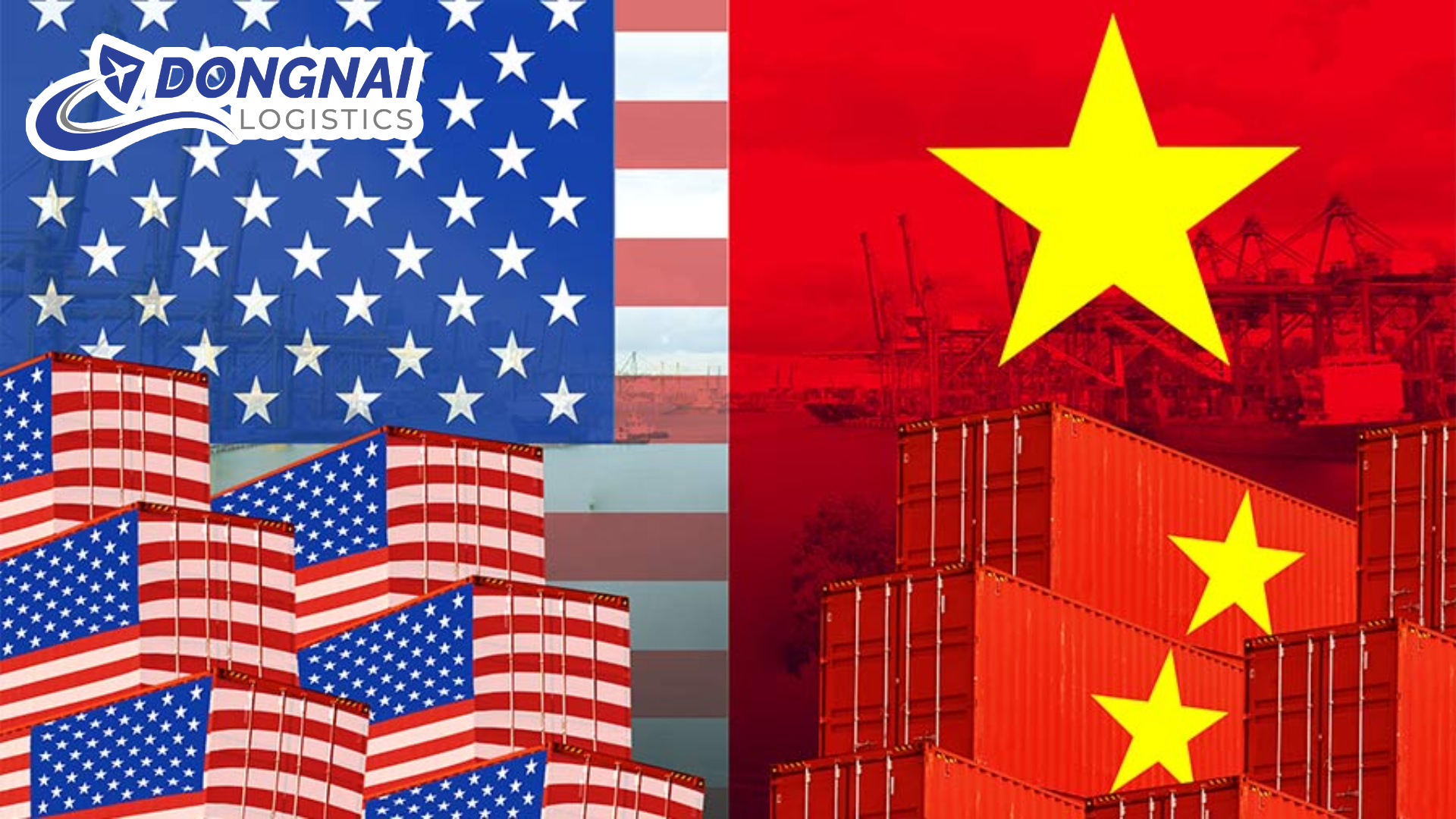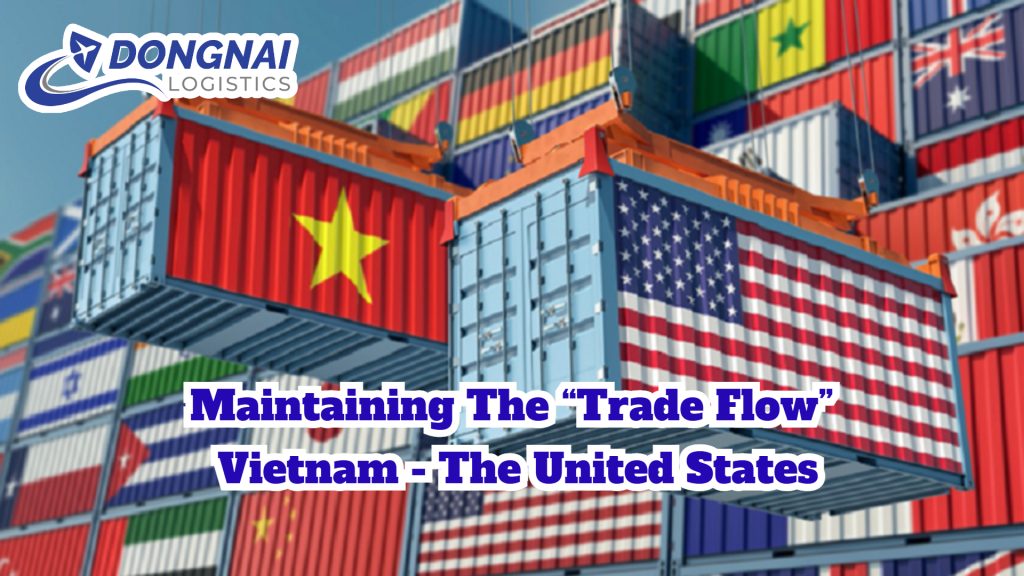MAINTAINING THE “TRADE FLOW” OF VIETNAMESE GOODS INTO THE UNITED STATES
Overview of Vietnam–U.S. Trade Relations
Trade relations between Vietnam and the United States have experienced remarkable growth over the past two decades. From a modest position in the early 2000s, the United States has now become Vietnam’s largest trading partner, especially as the top export destination. Conversely, Vietnam ranks among the countries with the highest trade surplus with the United States. Ensuring a stable trade flow between the two nations is a crucial factor for Vietnam to continue harnessing the vast potential of this dynamic market.
In the context of globalization and ever-shifting global supply chains—shaped by pandemics, geopolitical tensions, and rising protectionist policies—sustaining a stable trade flow with the U.S. is vital to safeguard the sustainable development of Vietnamese enterprises and the broader national economy. Moreover, this steady trade relationship not only carries significant economic implications but also underscores the importance of bilateral political and diplomatic engagement between the two countries.

Key Vietnamese Export Goods in the U.S.-Bound Trade Flow
Vietnam’s exports to the U.S. are highly diversified, spanning a wide range of industries. Among the most prominent export categories are:
Textiles, Garments, and Footwear
This is the leading export sector from Vietnam to the United States, accounting for a large share of total export turnover. As the world’s largest consumer of fashion and apparel, the U.S. offers continuously high demand for these goods. Maintaining a consistent trade flow in this sector is critical for the long-term viability and expansion of Vietnam’s textile and garment enterprises.
Wooden Products and Furniture
Vietnamese wooden products and furniture have been gaining increasing popularity in the U.S. market thanks to attractive designs, competitive prices, and compliance with environmental and labor standards. The country has built a strong reputation for supplying quality wooden furniture that appeals to U.S. consumers.
Electronics and Electronic Components
This fast-growing sector is largely driven by foreign direct investment (FDI), particularly from South Korean and Japanese corporations that have expanded their manufacturing presence in Vietnam. Products such as smartphones, semiconductors, and related components have rapidly climbed the export ladder, contributing significantly to trade volumes.
Processed Agricultural Products and Seafood
Vietnam’s signature agricultural and aquacultural products—such as shrimp, pangasius fish, cashew nuts, coffee, and black pepper—have secured a stable foothold in the U.S. market. These exports play a vital role in maintaining the trade flow, bringing value to both exporters and importers while supporting rural economies back home.
Challenges in Maintaining the Trade Flow into the U.S.
Despite the strong momentum, Vietnamese businesses face numerous challenges in exporting to the U.S. These hurdles are increasingly complex, influenced by global market volatility and stringent trade policies. Maintaining a consistent trade flow requires proactive strategies and ongoing adaptation.
Technical Barriers and Stringent Standards
The United States is widely regarded as one of the most demanding markets in the world, with strict regulatory standards regarding quality, food safety, product origin, and corporate social responsibility. Non-compliance with regulations from agencies like the FDA (Food and Drug Administration), USDA (United States Department of Agriculture), or the Consumer Product Safety Commission may result in rejected shipments or import bans.
Thus, to ensure continued access to this market, Vietnamese companies must constantly improve their product quality and maintain strict adherence to international standards. Investing in product traceability, sustainability practices, and clean production methods is no longer optional—it’s essential.
Risk of Trade Defense Investigations
Vietnam’s considerable trade surplus with the U.S. has placed the country under increasing scrutiny, making it a likely target for trade defense investigations such as anti-dumping, countervailing duties, or circumvention inquiries involving third-country origins. These investigations pose significant risks to the continuity of trade flows and may lead to the imposition of punitive tariffs.
To minimize such threats, Vietnamese firms must proactively manage compliance risks, maintain transparency in supply chains, and strengthen legal preparedness in cooperation with relevant authorities.
Supply Chain Disruptions and Rising Logistics Costs
Global supply chains have been repeatedly disrupted by container shortages, rising fuel prices, labor constraints, and port congestion. These factors have caused logistics costs to soar, complicating the movement of goods from Vietnam to the U.S.
Nevertheless, maintaining an uninterrupted trade flow remains a strategic priority. Vietnamese exporters must invest in effective logistics strategies, optimize freight routes, and explore multimodal transport options to remain competitive.
Intensified Regional Competition
Countries like Indonesia, Bangladesh, and India are emerging as formidable competitors in the U.S. market. With low labor costs, favorable export policies, and well-structured market penetration strategies, these countries are increasingly capturing market share.
Vietnam must respond by enhancing its competitive edge through innovation, workforce training, and improved value chain integration. Only by upgrading its capabilities can the country sustain a strong position in the lucrative U.S. market.
Strategies for Sustaining and Expanding the Trade Flow
To maintain and further accelerate export growth to the United States, a holistic and coordinated approach is required. Government agencies and businesses must work closely together toward the shared goal of preserving a stable and sustainable trade flow.
Enhancing Compliance with International Standards
Vietnamese enterprises must prioritize investments in technology, quality control, and supply chain management. Regularly updating knowledge of evolving U.S. regulations is crucial. By strengthening their compliance capacity, businesses can reduce risks and ensure smooth access to the market.
Training programs, third-party certifications, and international audits should become integral parts of export operations. These measures build trust among U.S. buyers and enhance the reputation of Vietnamese products.
Building Brands and Increasing Value-Added Exports
Rather than relying solely on raw or semi-processed exports, Vietnamese firms should focus on deeply processed products with distinct branding and packaging. Developing unique brands will help differentiate products and capture higher value.
Success stories like Vinamit (dried fruit products) and Trung Nguyên (coffee) demonstrate that Vietnamese brands can compete and thrive in the U.S. market. By investing in branding, design, and storytelling, exporters can extend their reach and improve margins.
Diversifying Export Channels and Niche Markets
In addition to traditional maritime shipping, companies should explore air freight and cross-border logistics to serve different segments more effectively. E-commerce is a particularly promising channel for entering the U.S. market.
Platforms like Amazon, Walmart Marketplace, and Shopify offer Vietnamese exporters direct access to American consumers. Adopting these digital platforms helps expand reach and provides valuable market insights in real-time.
Leveraging Bilateral and Regional Cooperation Mechanisms
Vietnam and the United States have been deepening their trade and investment ties. The recent upgrade of their relationship to a Comprehensive Strategic Partnership reflects a shared commitment to long-term collaboration.
Trade agreements such as the CPTPP (Comprehensive and Progressive Agreement for Trans-Pacific Partnership) and EVFTA (EU–Vietnam Free Trade Agreement) also create momentum for Vietnamese businesses to align with global standards and enhance their credibility.
By fully utilizing these frameworks, exporters can secure preferential access, reduce tariffs, and better position themselves in the global value chain.

The Role of Government and Export Support Agencies in Trade Flows
To safeguard and facilitate the Vietnam–U.S. trade relationship, government bodies and trade support institutions must assume a proactive role in the following areas:
-
Intensifying trade promotion through exhibitions, business delegations, and digital trade platforms targeting the U.S. market.
-
Coordinating legal support to manage and respond to trade defense investigations effectively.
-
Assisting businesses in understanding U.S. market regulations, consumer trends, and industry-specific standards.
-
Upgrading logistics infrastructure to reduce costs, shorten delivery times, and improve supply chain efficiency.
Ensuring the Continuity of Vietnam’s Trade Flow into the United States
The United States remains a vital and high-potential market for Vietnamese goods. Its significance is expected to persist for many years to come. However, maintaining a steady and resilient trade flow requires more than market opportunity—it demands consistent effort, strategic coordination, and the relentless pursuit of quality and innovation.
The Vietnamese government, industry associations, and the business community must work together to enhance competitiveness, build global brands, and protect the national export agenda. Only through joint efforts can Vietnam continue to thrive in the challenging yet rewarding U.S. marketplace.
Read more:
Vận tải biển: Xương sống của chuỗi cung ứng toàn cầu
Vải Vận Chuyển Từ Đồng Nai Sang Phần Lan Bằng Đường Biển
Vận chuyển hàng hóa từ Đồng Nai đi Phú Quốc
Chuyển phát nhanh từ Quảng Ninh đến Đồng Nai chất lượng, uy tín, giá cạnh tranh

